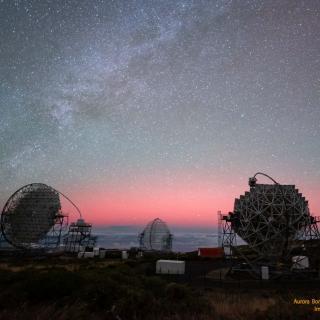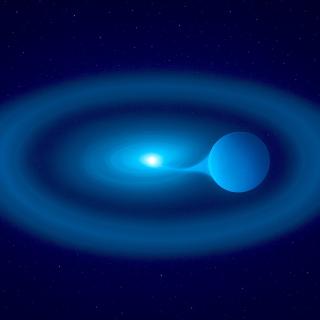These results, product of a two-way international cooperation, will be published in Astronomy and Astrophysics and The Astrophysical Journal.
Two international groups of astronomers, using three of the best telescopes today, have been able to measure directly, for the first time, the mass of brown dwarfs in two multiple systems. Eduardo Martín Guerrero de Escalante, a researcher at the Instituto de Astrofísica de Canarias (IAC), has participated in both groups. Two of the dwarfs observed are of spectral type L, a category of objects discovered by Martín and his collaborators seven years ago. The brown dwarfs with measured masses belong to two multiple systems in the solar neighborhood. The less massive components of these systems have masses ranging between 54 and 66 times the mass of Jupiter. These results confirm that brown dwarfs are the natural link between stars and giant planets.
The team headed by Hervé Bouy, of the Max-Planck-Institut für Extraterrestrische Physik, surveyed the 2MASS J07464+2000 for four years with the Very Large Telescope, of the European Southern Observatory (ESO), in Chile, the Keck-1 telescope in Hawaii, and the Hubble Space Telescope. The team headed by María Rosa Zapatero Osorio, of the Laboratorio Espacial de Física Fundamental de Madrid, and previously a researcher at the IAC, surveyed the Gliese 569 B for two and a half years with the Keck-II telescope in Hawaii.
Since 1963, the existence of brown dwarfs had been predicted by theoretical calculations, but it was not until 1995 that the first objects with such a low luminosity, brown dwarfs, according to evolutionary models, were found. Today, more than 200 objects with luminosities and temperatures indicating that they are not stars, but rather brown dwarfs, have been discovered. However, it had not been possible to provide direct measurements of the most important parameter, the mass of the objects, until now. The mass obtained for the binary systems 2MASS J0746+2000 and Gliese 569B are consistent with the theoretical models for ages younger than the Solar System. These brown dwarfs are still at an early phase of gravitational contraction, so they are relatively bright for this type of objects, which can reach luminosities as weak as those of planets when they are old enough.
Measuring the mass of brown dwarfs is fundamental to understand the formation and evolution of very low mass objects. The resolution and sensitivity of the best telescopes in the world is needed to measure their mass. In the upcoming years, these types of measurements will be achieved with the adaptative optical system of the Gran Telescopio Canarias (GTC), presently in construction at the Roque de los Muchachos Observatory , on the island of La Palma.
Betacam animations available at Tel: 922 605 206 and 922 605 371


